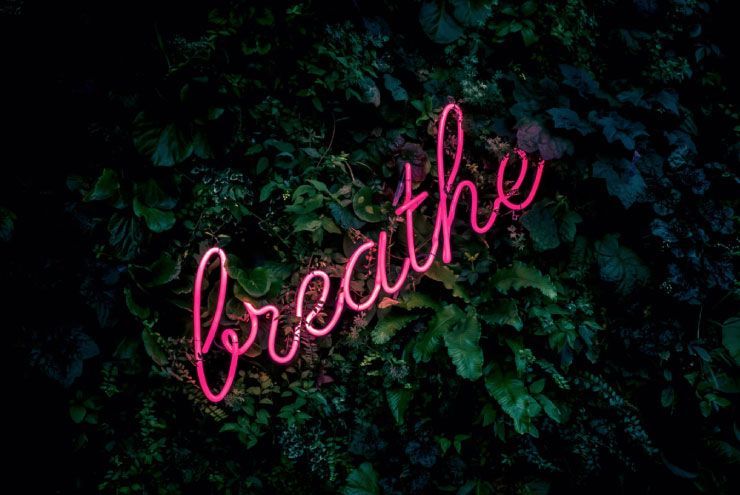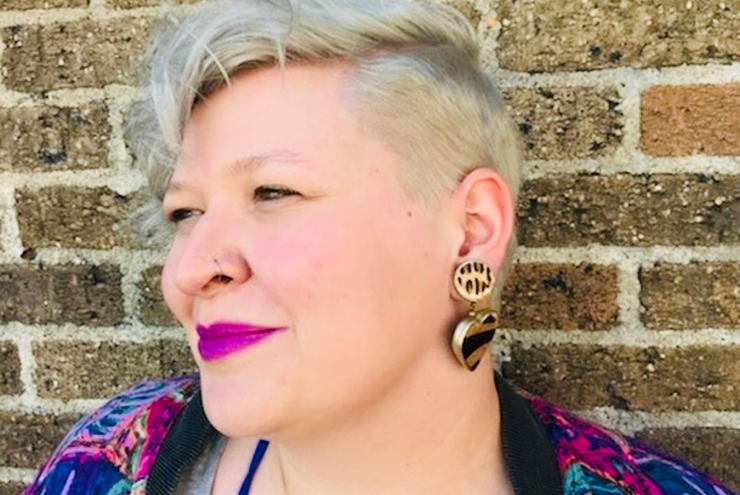By Kelly M. Marshall
The number one thing I consult on with my LGBTQIA+ clients in my wellness practice is self-care—what it is, and how to do it in a sustainable way that feels replenishing and joyful. Queers, especially, must become self-care ninjas because we are still an oppressed minority; queers with intersectional identities even more so. Radical self-love, self-compassion, and the practices of self-care are so essential to our wellbeing both individually and as a community.
Self-care is not just Instagram fodder, Lush bath bombs, aromatherapy, and crystals. It’s not selfies, expensive beverages, salads, yoga poses, or even spa services. Self-care is actually work. And it often can be free. It’s akin to the psychological concept of re-parenting, or self-stewardship. It is adulting 2.0. It’s an essential skill that combats the effects of living in the relentless consumerist culture we’re steeped in. But don’t let that discourage you, because here are my top five self-care tips for queers.
Reinvent your relationship with the word “no.”
I know, it’s hard saying no to opportunities to socialize, make money, collaborate, help a friend or family member, or assuage your need to be needed; saying no to “extra credit” at work; saying no to a potential client; saying no to face-to-face meetings that would be better resolved over email or (gasp) a five-minute phone call; or saying no to coffee dates with people who you feel like you probably should be closer to but feel lukewarm about. Saying no is the hardest form of self-care for me to practice. But when I do, I receive an abundance of a precious commodity: time that I can choose to spend how I see fit.
Get comfortable with rest and sleep.
Rest is just as productive as work. It’s just differently productive than work. Real, rejuvenating rest goes a long way toward filling up your cup so that you can bring your whole self to a task when you are producing work. This means putting the phone down. Scrolling IG is not productive rest. Resting means regular bedtimes. And boundaries around your bedtimes. And prioritizing sleep right up there with eating regular meals and drinking plenty of water. Yes, you do physiologically need seven to nine hours of sleep a night. It means exploring the world of power napping. Plan accordingly. But resting isn’t just sleep. You can even try a coffee nap or listening to a Yoga Nidra with your poor, blue-light strained eyeballs blissfully shut. It means exploring the concept of stillness. And allowing yourself to consciously take slow, deep breaths.
Just meditate.
As a yoga therapist and a mindfulness coach, I’ve heard literally every excuse ever as to why people don’t meditate. And all of it boils down to this—most people have a very fixed idea of what meditation is supposed to be or look like: sit still for 20 minutes and think of nothing. This misconception intimidates and overwhelms people to the point that they just decide not to do it. And yes, it’s difficult in the beginning. It’s supposed to be difficult. It’s akin to slamming on the brakes on your brain, which is like an 18-wheeler that’s been traveling 80 miles per hour on a wet road. You are not going to be able to stop on a dime. Your brain is not habituated to that kind of activity at all.
The point of meditation is not to stop thinking in the first place. That’s impossible. Instead, you begin to train yourself to witness your thoughts as you’re thinking them, rather than getting involved in your thoughts as you’re thinking them. You begin to change your relationship with yourself, in a very subtle way. It takes time. It takes consistency. It takes self-compassion. Also, you don’t have to sit still to meditate. You don’t have to be silent. You can meditate while running or walking or cycling or dancing or singing along to music or knitting or painting or washing the dishes or feeding the baby or doing yard work. You can meditate during sex, or masturbation. Ever heard of OMing? You should not try to meditate while driving or trying to complete any task that is complex and requires multiple steps. The only thing that’s required for meditation is a willingness to recognize when you’ve disengaged with being present and you have become lost in thought. Then, bringing your attention back to what’s happening right here and now, in breath, physical sensation, emotion, and noticing what thoughts are evoked without going down the rabbit trail of that thought.
Simplify.
There’s a reason why minimalism, Marie Kondo, the four-hour work week, tiny houses, and #vanlife are trending hard right now. It’s an attempt to carve out a work/life balance from the mounting pressure of debt, relentless productivity expectations, consumerist culture, and the idea that more stuff (or better stuff) equals more happiness. Or conversely, the idea that more work equals more money. But where attention goes, energy goes. If we are constantly diverted by clutter and material wants, numerous side hustles, an overflowing inbox, large homes to maintain, or extra subscription services, our energy and our money begins to dissipate. If we scale back our lifestyles and design our lives in tune with our values and what brings us joy, we can begin to experience more peace, mentally, emotionally, and financially.
Explore different avenues of self-reflection and self-discovery.
Something that’s often missing from our modern life is a sense of deeper purpose. Transcendence. Existential connection. It could be argued that that’s why yoga studios and witchcraft are going strong; there’s a sense of connection and ritual with the transcendent, that which is beyond the mundane. We can cultivate this daily. It doesn’t have to be relegated to some experience you have to pay for.
The journey to connection with the higher self, or with spirituality begins with you and exploring those questions. There are so many tools available to you for self-reflection: Tarot, divination, Yoga, Buddhism, journaling, creative expression, psychotherapy, the Enneagram, astrology, Neo-Paganism—good old-fashioned navel gazing. All of these things are secular spiritual tools to help you dig deeper into the big questions and begin to create a spiritual narrative of who you are, where you’re going in life, and why you’re going there. When we know our deeper values, needs and wants, we can approach self-care intelligently. We know how to get the most nourishment and recharge from the things we spend our time doing.
The best way to approach self-care is to look at it gently and progressively. Set small, achievable goals and actually meet them. Instead of thinking of self-care as this thing you have to master, just practice. Notice how you feel after you make a self-care choice. Did you feel more replenished and recharged after watching Netflix or going for a walk? Let me be clear, there’s no value judgment on self-care; one choice is not “better” than the other. We’re looking for efficacy and making choices that fills your cup, rather than just distracting you. Make micro-adjustments to whatever routines you already have in place; adding something new is easier than taking something away. Finally, let go of what you think self-care should look like! You are your own best authority on what brings you joy and peace. Take whatever advice above that resonates with you and leave the rest. Here’s to 2019 being the year of self-care!







